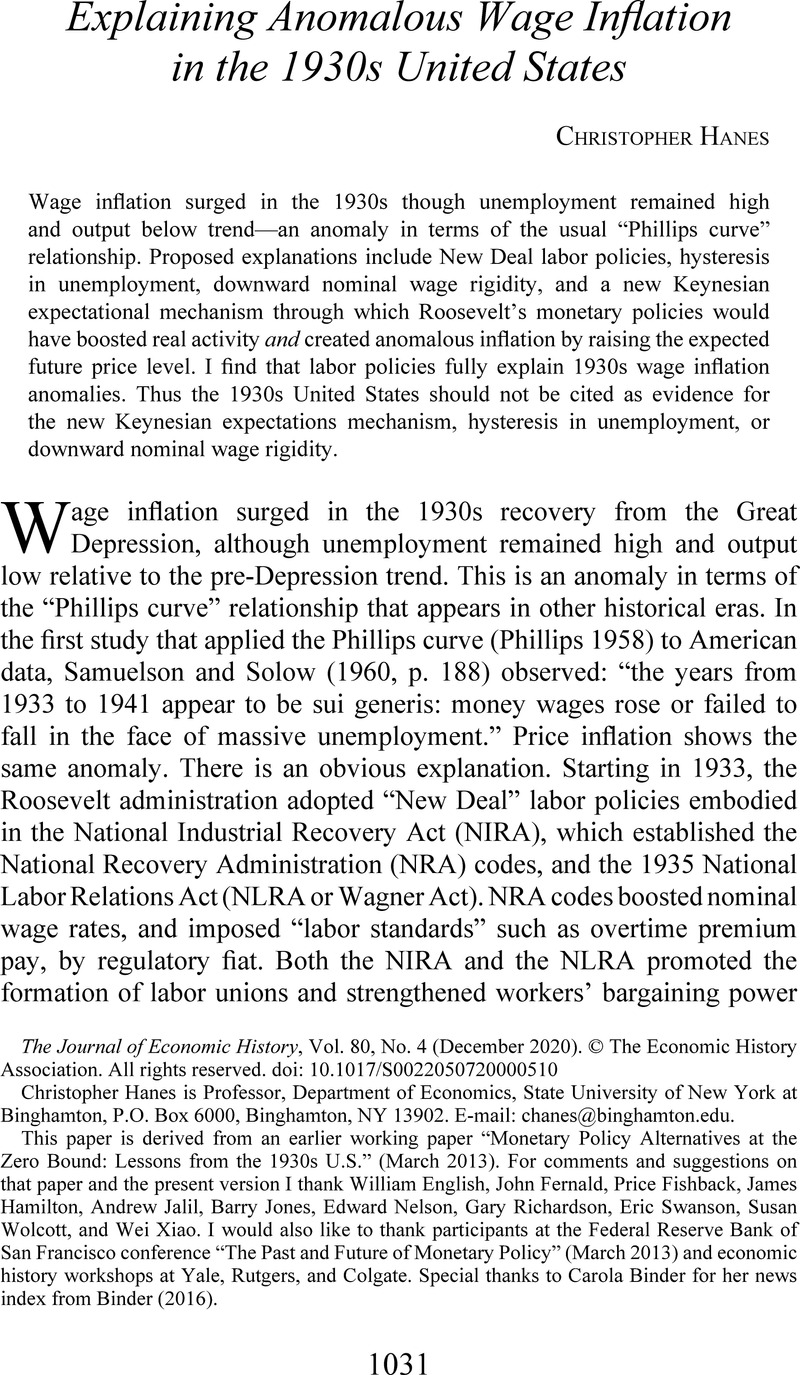Article contents
Explaining Anomalous Wage Inflation in the 1930s United States
Published online by Cambridge University Press: 31 December 2020
Abstract

- Type
- Article
- Information
- Copyright
- © The Economic History Association 2020
Footnotes
This paper is derived from an earlier working paper “Monetary Policy Alternatives at the Zero Bound: Lessons from the 1930s U.S.” (March 2013). For comments and suggestions on that paper and the present version I thank William English, John Fernald, Price Fishback, James Hamilton, Andrew Jalil, Barry Jones, Edward Nelson, Gary Richardson, Eric Swanson, Susan Wolcott, and Wei Xiao. I would also like to thank participants at the Federal Reserve Bank of San Francisco conference “The Past and Future of Monetary Policy” (March 2013) and economic history workshops at Yale, Rutgers, and Colgate. Special thanks to Carola Binder for her news index from Binder (2016).
References
REFERENCES
- 2
- Cited by




